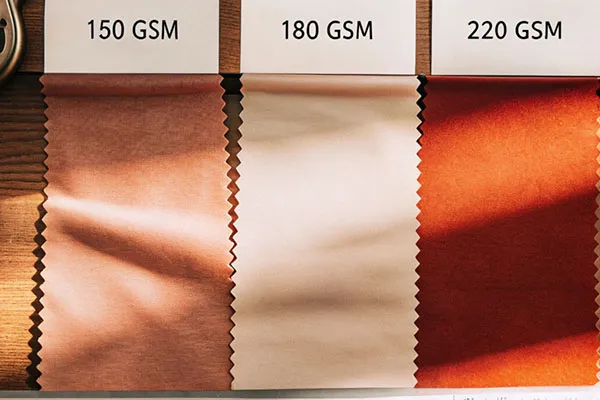In the textile and bedding industry, GSM is more than just a technical term—it is a critical performance indicator that directly impacts product quality, functionality, and customer satisfaction. Understanding GSM helps businesses and buyers alike make informed decisions about fabrics, ensuring the right balance of comfort, durability, and cost-efficiency.
(more…)Category: Guide
-
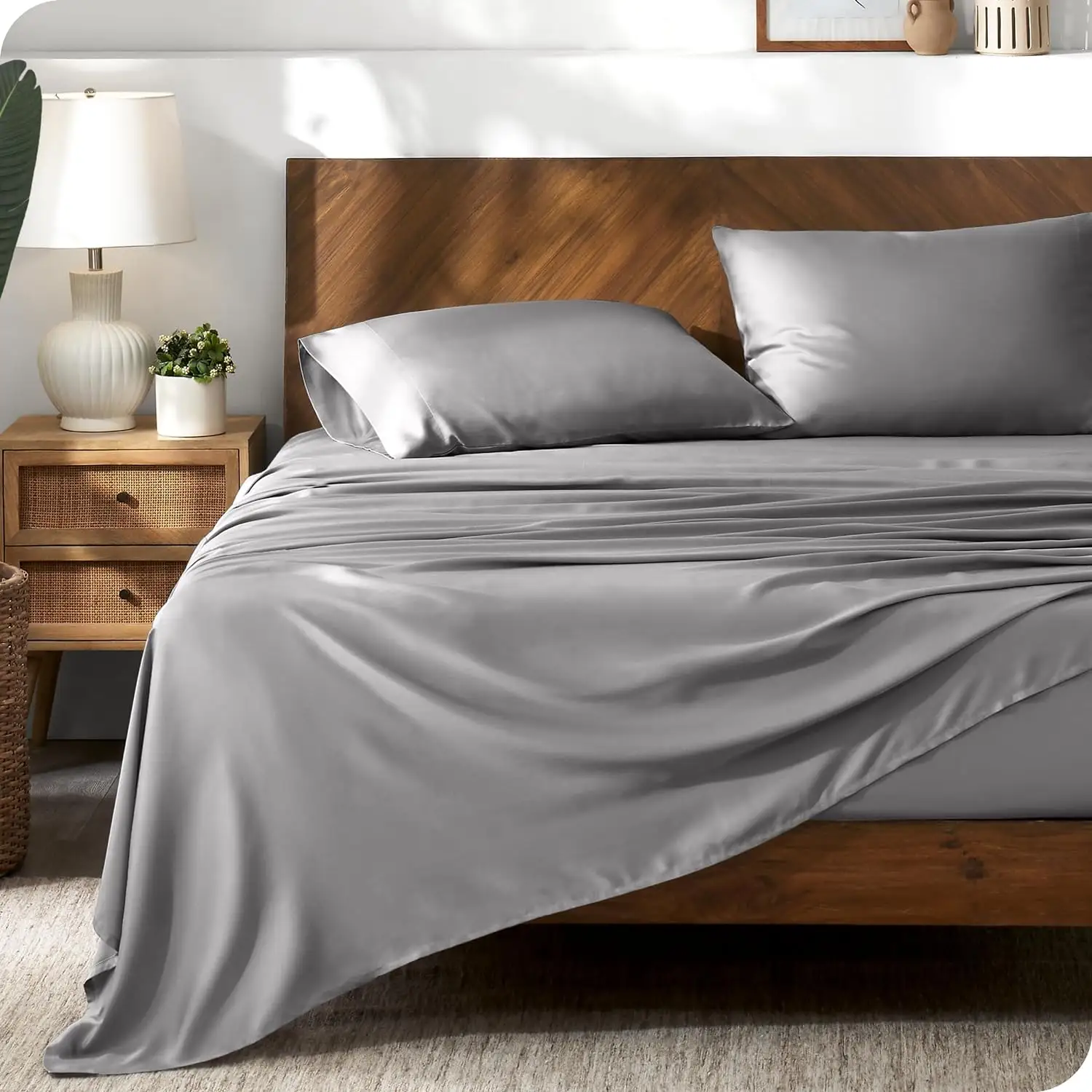
Lyocell Bed Sheets: Smart Investment or Just Another Bedding Trend?
In today’s competitive bedding market, “sustainability” and “luxury” are buzzwords often used to differentiate products. Lyocell bed sheets, often marketed under the brand name Tencel™, have gained a reputation as an eco-friendly, premium option. But the question remains: are Lyocell sheets genuinely worth the investment, or are they just another marketing trend?
(more…) -
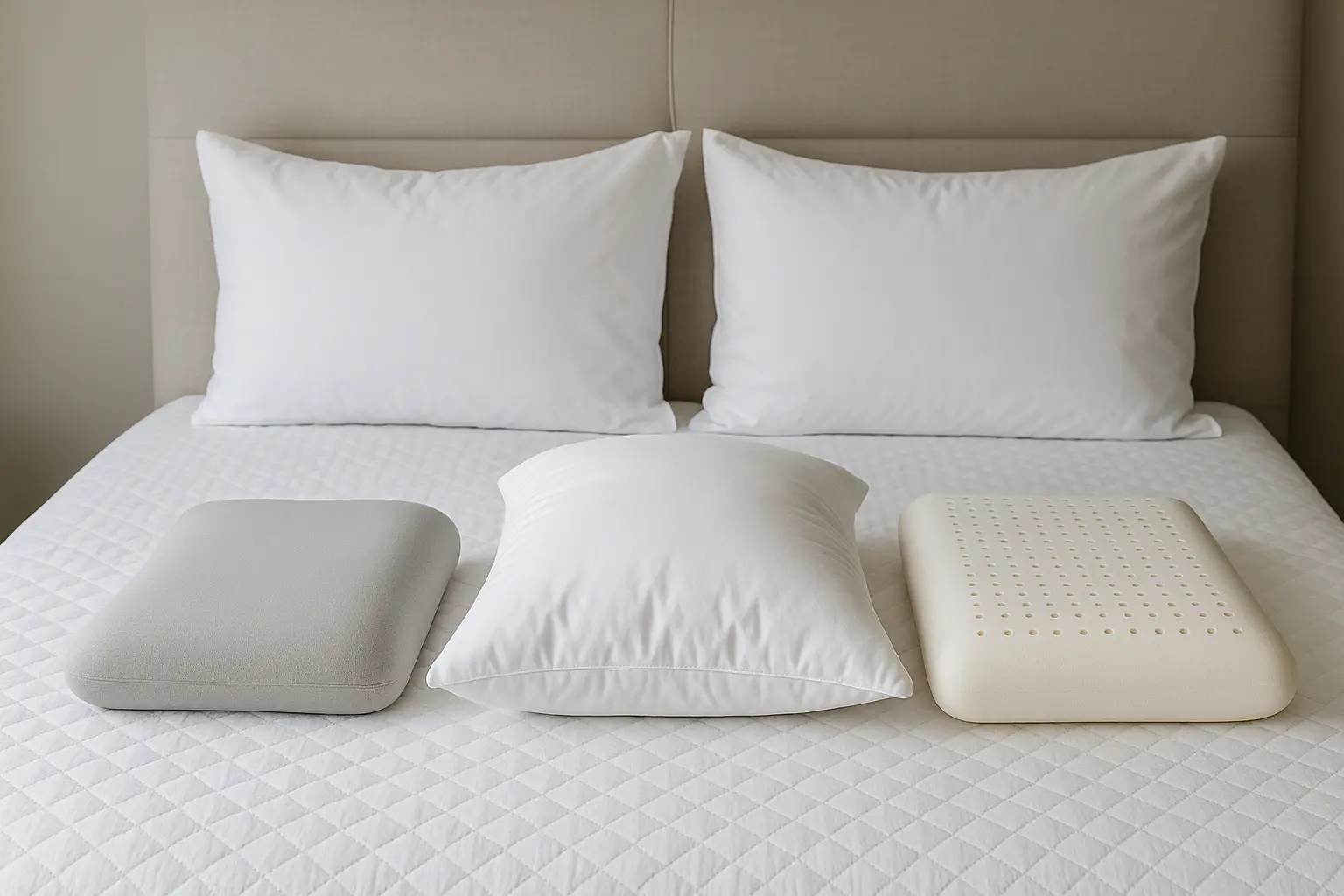
What Is the Most Comfortable Pillow for Side and Back Sleepers?
Choosing the right pillow is one of the most critical decisions for improving sleep quality. For side and back sleepers, comfort goes beyond softness—it involves proper spinal alignment, pressure relief, and breathable materials that support uninterrupted rest.
(more…) -
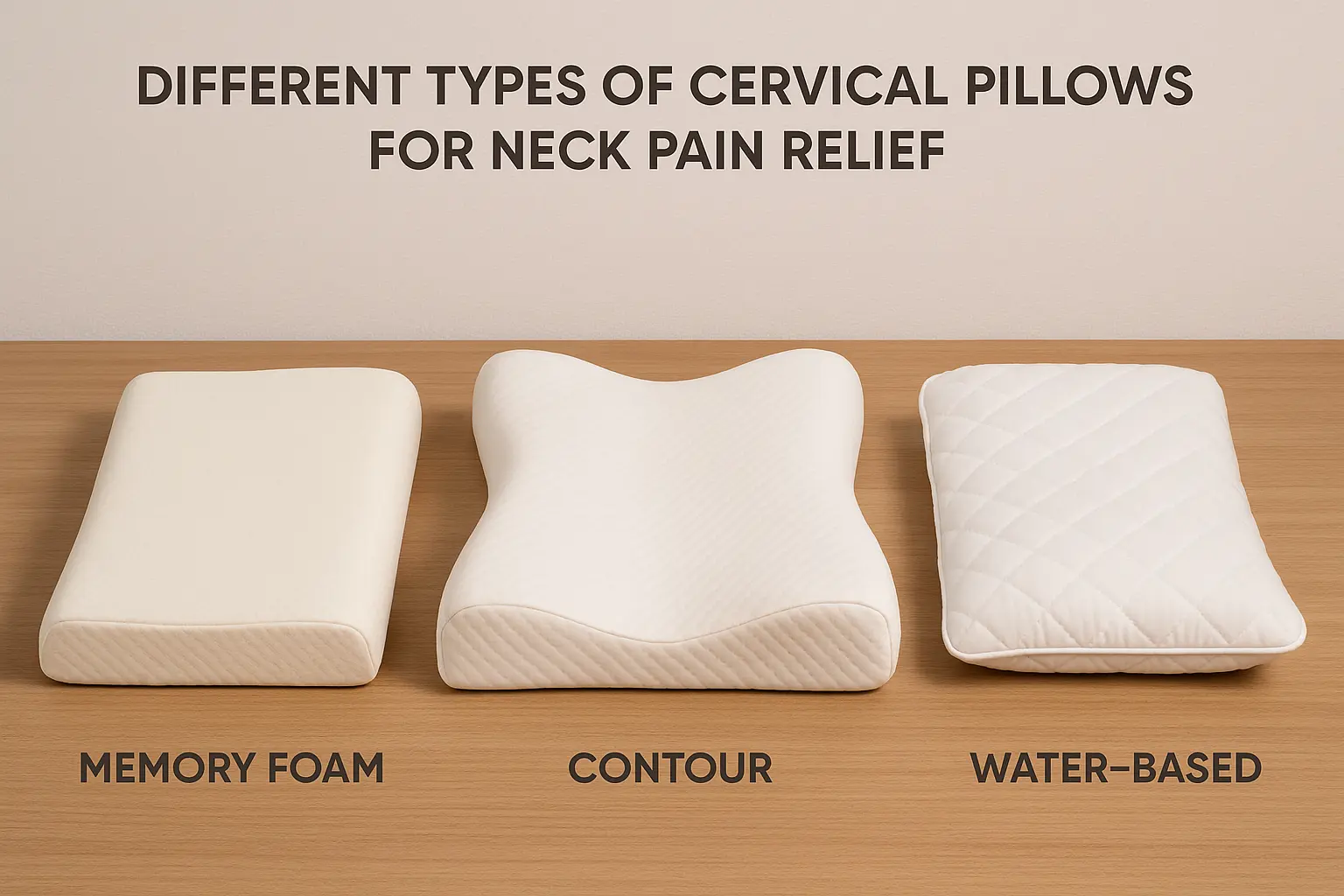
Best Cervical Pillow for Neck Pain: How to Choose the Right One
Neck stiffness, poor sleep, and morning discomfort are common complaints among adults, especially those who spend long hours at desks or experience poor posture. A cervical pillow—also called an orthopedic or contour pillow—can help maintain spinal alignment, reduce muscle strain, and provide restorative sleep. But with so many options on the market, from memory foam to water-based designs, it can be overwhelming to choose the right one.
This guide breaks down the best pillow types, their benefits, and how to select the one most suited to your sleeping needs.
(more…) -
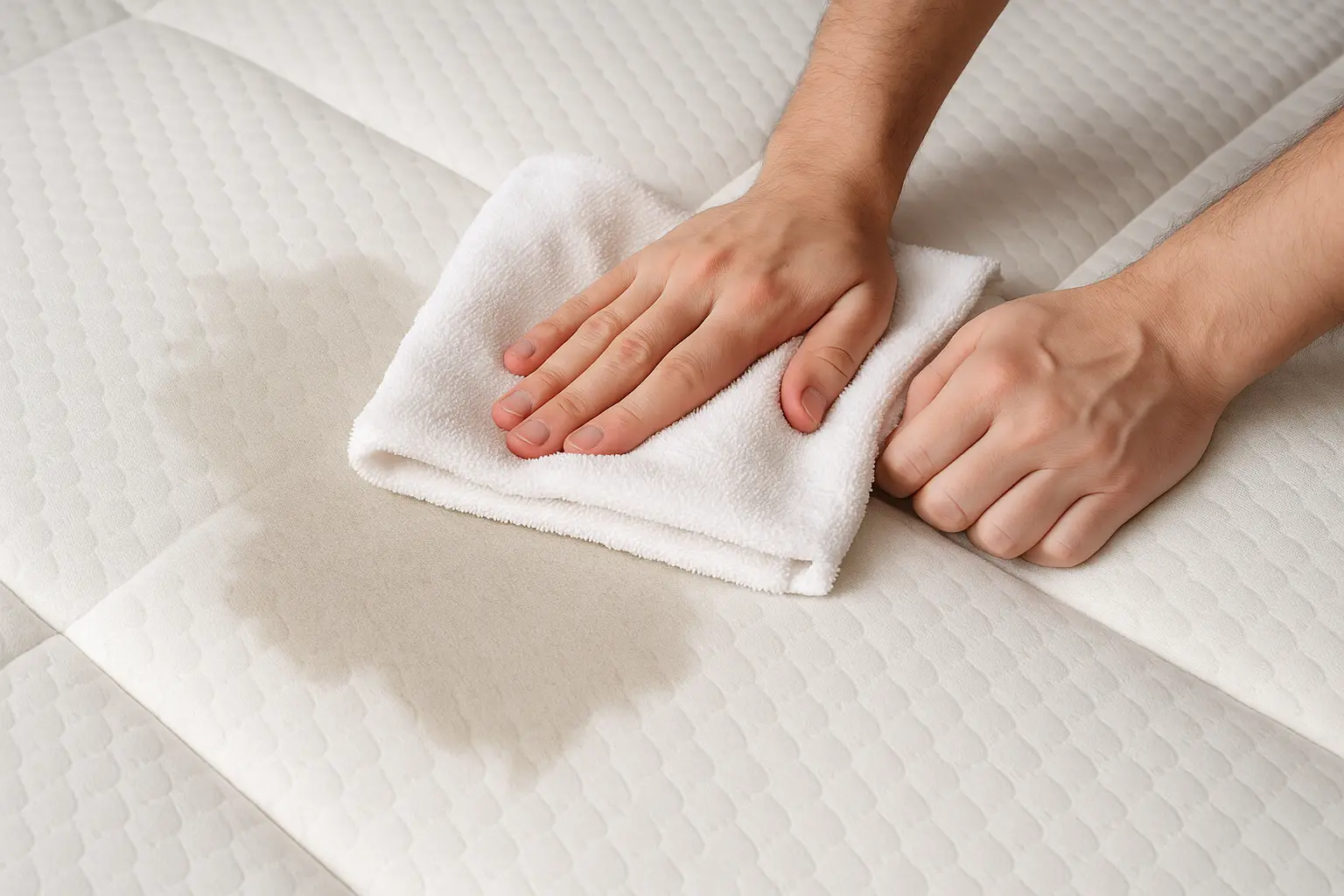
How Do I Dry a Wet Memory Foam Mattress?
A memory foam mattress is an investment in long-term comfort and spinal health. However, unlike traditional spring mattresses, memory foam is highly absorbent. When exposed to water, spills, or high humidity, it can quickly soak up moisture deep into its core. If not dried properly, the trapped moisture may cause mildew, odors, and even permanent damage.
Whether you are a household user, a hotel operator, or a procurement manager for hospitality projects, knowing the correct drying techniques is essential for maintaining product lifespan and customer satisfaction.
(more…) -
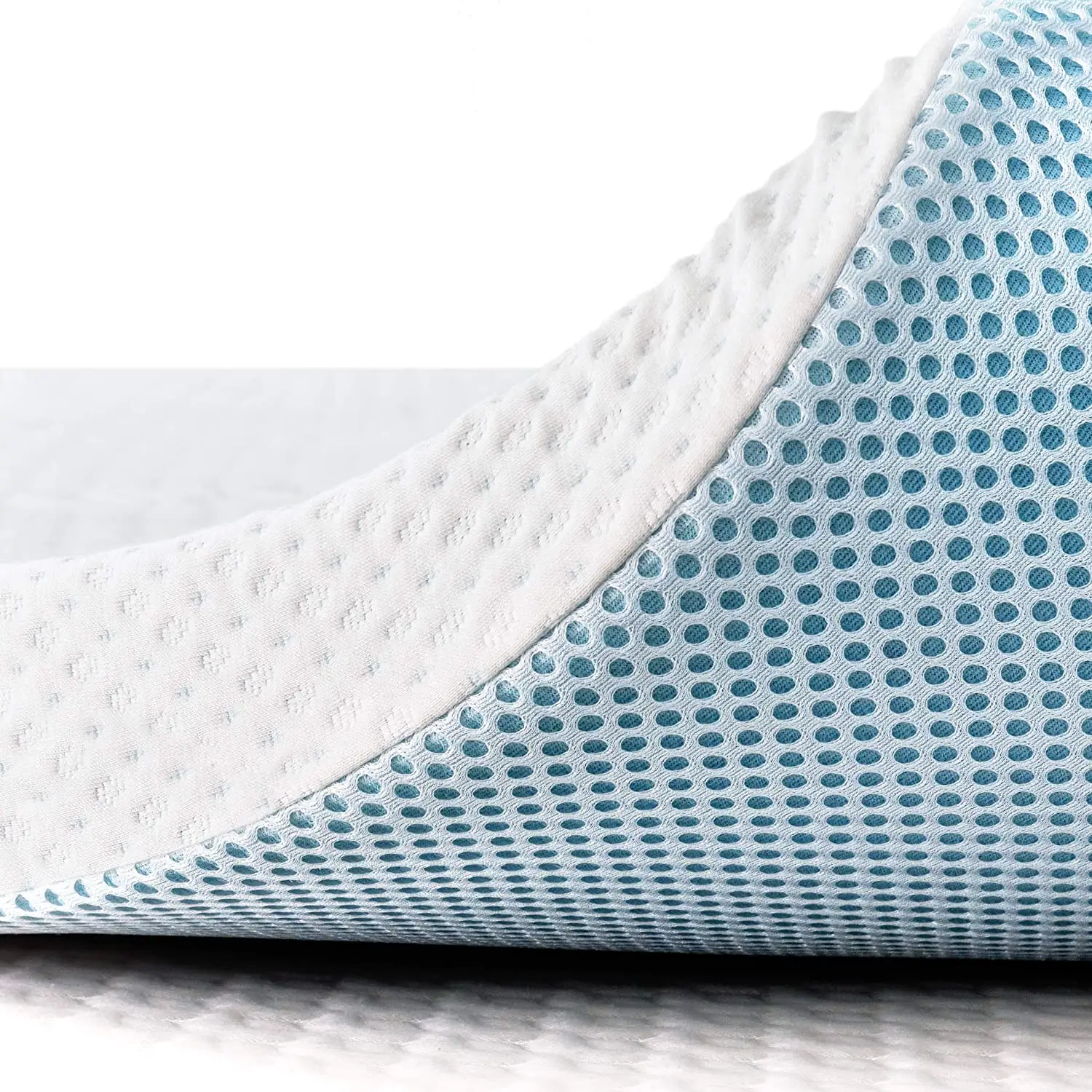
Why Are Gel Memory Foam Mattresses Worth the Investment?
In the evolving sleep industry, gel memory foam mattresses are setting a new standard for comfort and wellness. By blending the adaptive support of memory foam with innovative cooling technology, these mattresses address common pain points in traditional sleep solutions. But what makes them a worthwhile investment for both households and the hospitality sector?
(more…) -
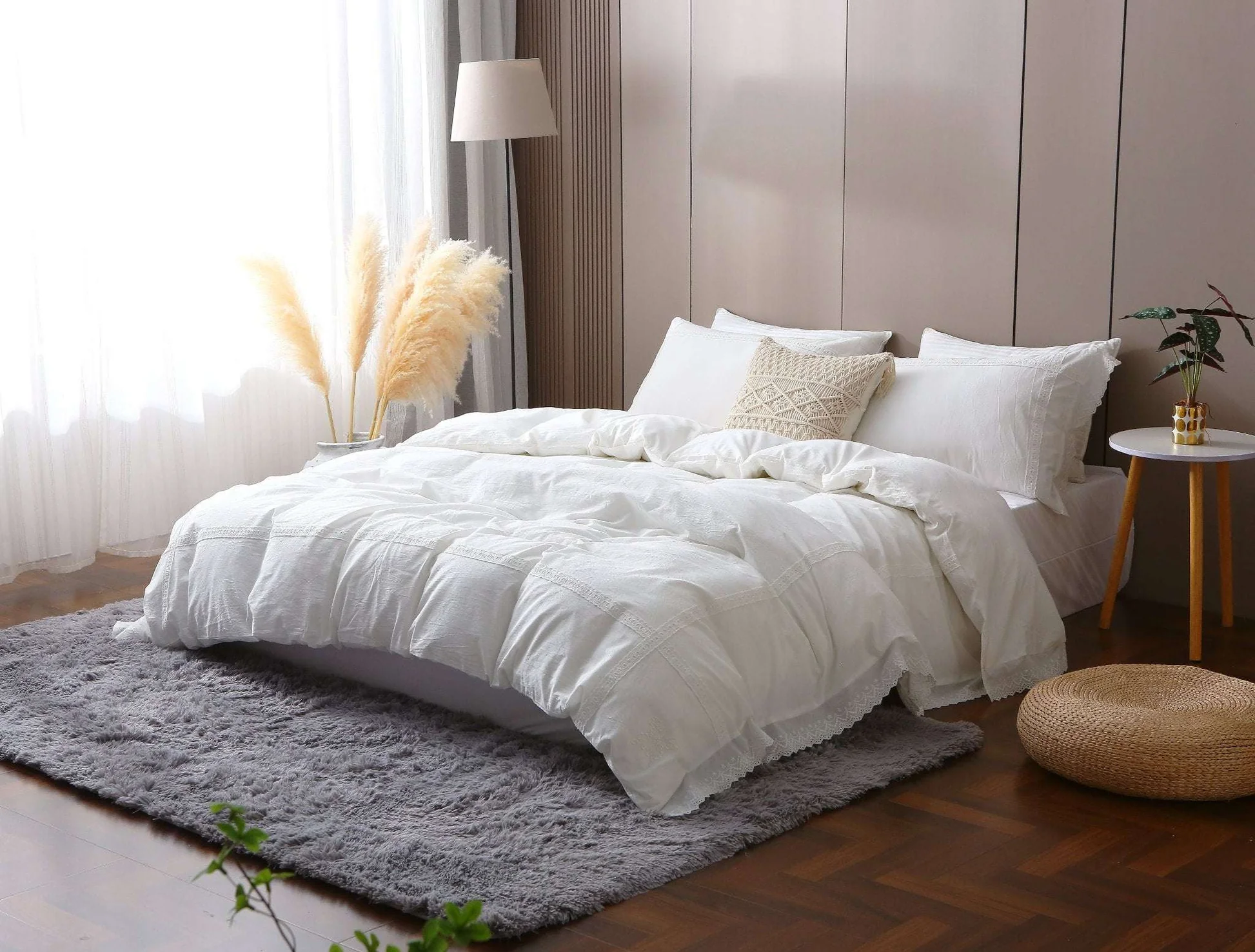
Why Luxury Hotel Bed Sheets Feel Softer — A Guide for Hotel Buyers
If you’ve ever stayed in a luxury hotel, you probably noticed that the bed sheets feel exceptionally soft, smooth, and inviting — while in many ordinary hotels, the sheets may feel a bit stiffer. For hotel owners and purchasing managers, understanding these differences is important when sourcing bedding sets that will enhance guest comfort and satisfaction.
As a hotel bedding manufacturer with over 20 years of experience, we’ve supplied a wide range of bed linens to properties from budget hotels to five-star resorts. In this guide, we’ll explain:
- The materials used in luxury hotel sheets
- Why fabric quality affects softness and durability
- How different hotels choose bedding based on their needs
- Customization options available for hotel buyers
1. The Secret Behind Luxury Hotel Softness: Materials and Weave
The softness of luxury hotel sheets comes down to fiber quality, thread count, and weaving method.
Common Materials Used in Hotels:
Material Characteristics Typical Use in Hotels 100% Cotton (Long-Staple Cotton, Egyptian Cotton, or Pima Cotton) Soft, breathable, durable; long fibers create smoother fabric 4–5 star hotels, premium suites Cotton-Polyester Blend (e.g., 60% cotton, 40% polyester) More wrinkle-resistant, cost-effective, slightly less soft Mid-range hotels, business hotels Microfiber Soft, lightweight, quick-drying, budget-friendly Budget hotels, short-stay inns Bamboo Fiber or Tencel Naturally soft, eco-friendly, moisture-wicking Boutique and eco-friendly hotels Weave Types That Affect Comfort:
- Sateen Weave – Smooth, silky feel, slight sheen (common in luxury hotels).
- Percale Weave – Crisp, cool, matte finish (favored in warm climates).
- Jacquard or Damask – Decorative patterns woven in, used for a more upscale look.
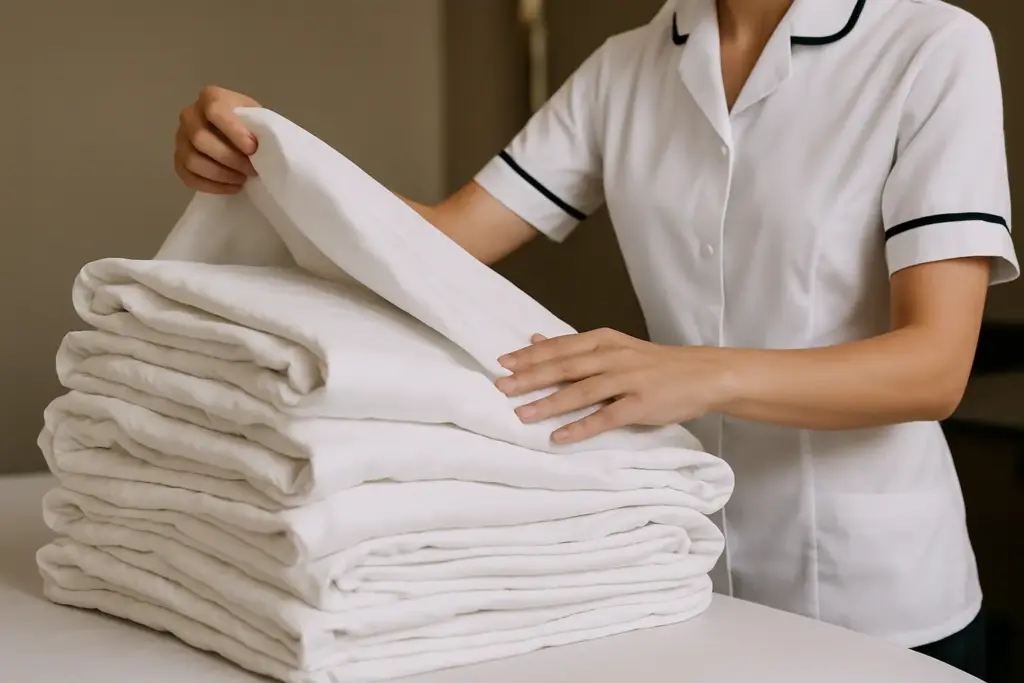
2. Why Budget Hotel Sheets Feel Stiffer
In ordinary hotels, the sheets often use:
- Short-staple cotton or higher polyester content for lower cost and durability under heavy washing.
- Lower thread count (120–200) for cost savings, but this also makes them feel rougher.
- Heavy starching during laundry for a crisp look, which can make the fabric feel hard.
Luxury hotels, in contrast, invest in:
- Long-staple cotton with higher thread counts (300–600), which feels smoother against the skin.
- Gentler laundry processes that avoid excessive starch and preserve fabric softness.
3. Choosing Bedding Based on Hotel Type
When we supply hotels, the selection often depends on:
- Budget hotels: Focus on easy maintenance, high washing durability, quick drying — usually cotton-polyester blends or microfiber.
- Mid-range hotels: Aim for a balance between comfort and cost — often use 100% cotton percale for a crisp, fresh feel.
- Luxury hotels & resorts: Prioritize guest experience with premium Egyptian cotton sateen, 400–600 thread count, and tailored finishes.
4. Customization Options for Hotel Buyers
As a manufacturer, we can customize hotel bedding sets to match your brand’s style and comfort standards:
- Fabric & Material: 100% cotton, cotton blend, microfiber, bamboo, or Tencel.
- Thread Count: 200–800 depending on comfort level and budget.
- Weave Style: Percale, sateen, jacquard, or custom patterns.
- Size & Fit: Standard, deep pocket, oversized king/queen.
- Branding: Embroidered hotel logos, woven labels, or custom color piping.
- Color & Design: Classic white, pastel tones, or bespoke designs.
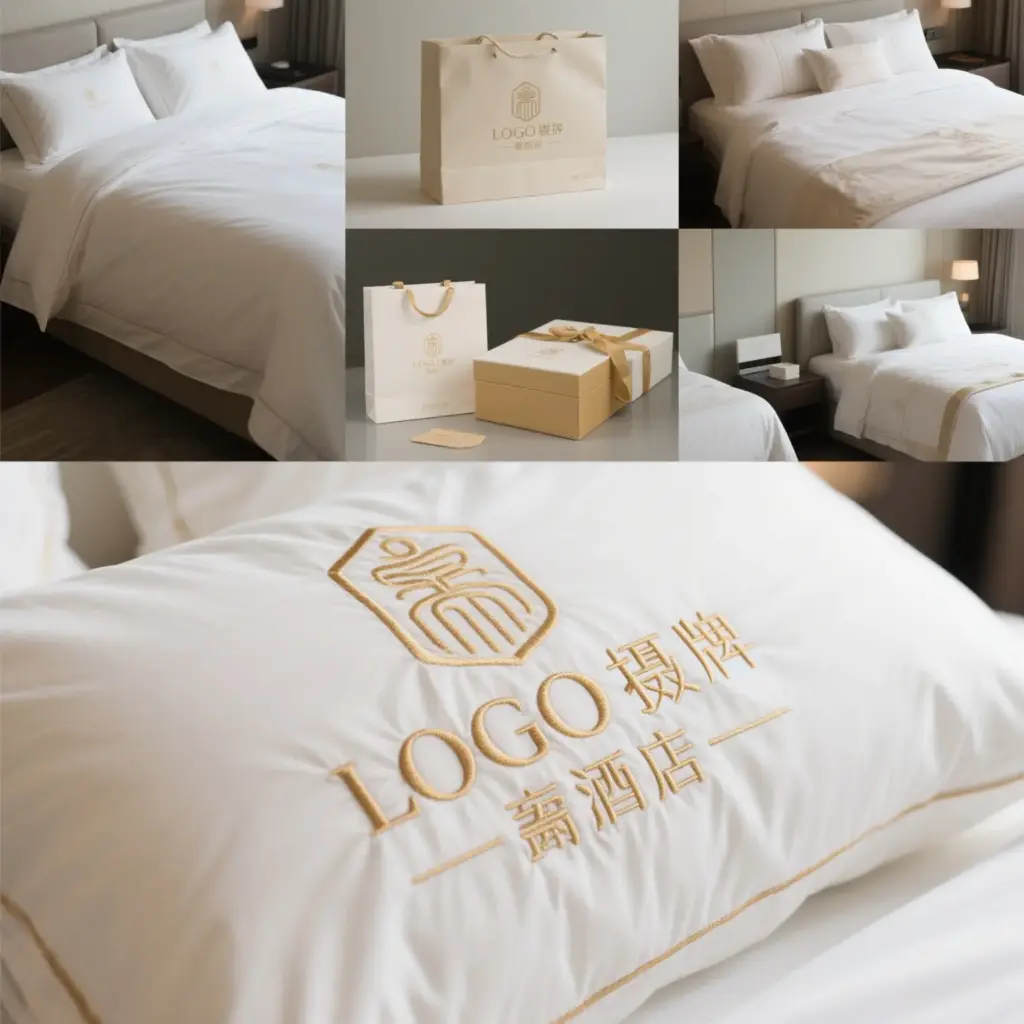
5. Final Thoughts for Hotel Purchasing Managers
The bedding you choose directly impacts your guests’ sleep experience — and their overall impression of your hotel. Investing in higher-quality fabrics not only improves comfort but also extends the lifespan of your linens, making them a better long-term value.
As a direct manufacturer, we can help you select or design the perfect bedding set for your hotel — whether you’re outfitting a luxury resort, a cozy boutique inn, or a large business hotel chain.
Contact us today to explore material samples, thread count options, and customized hotel bedding solutions.
-
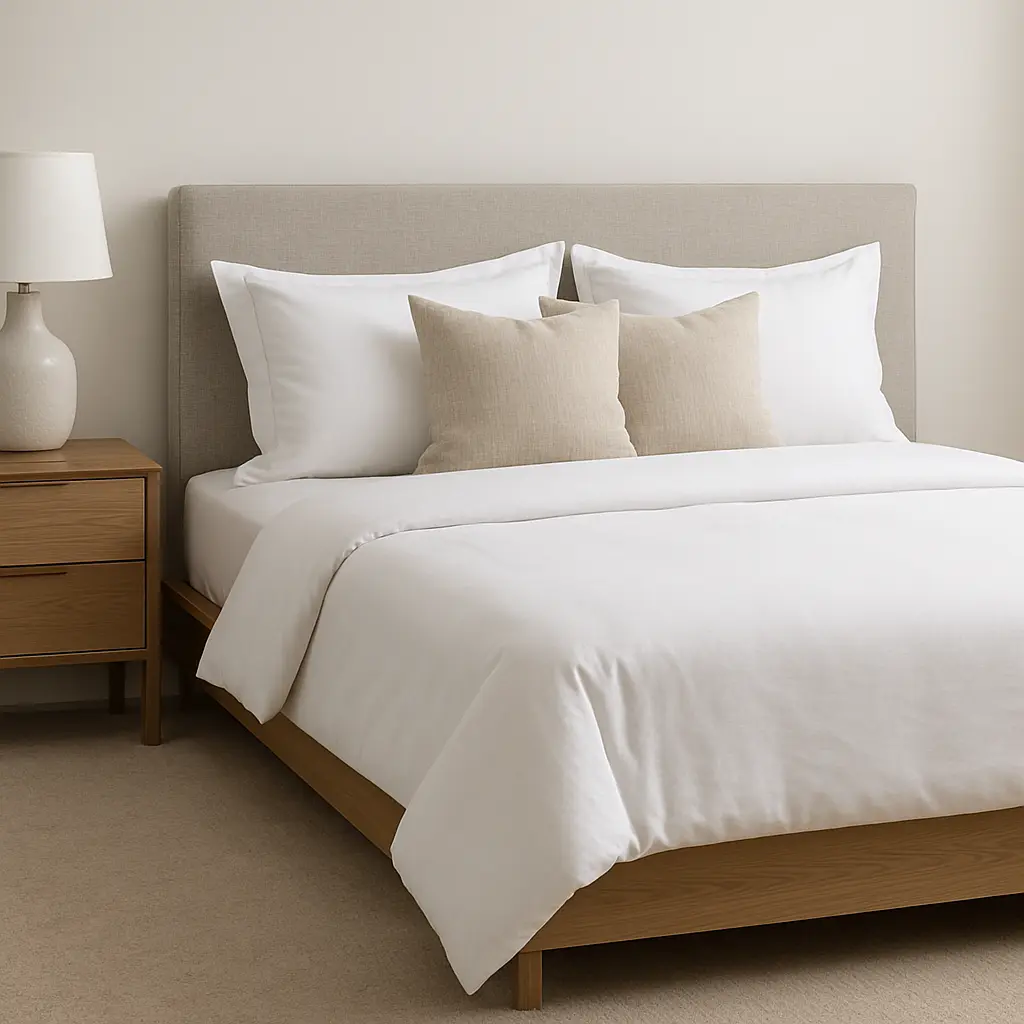
What Type of Bedding Is Suitable for a Platform Bed?
Platform beds have become a preferred choice in both residential and hospitality settings due to their sleek design, minimal profile, and structural stability. Selecting the right bedding for a platform bed is not simply a matter of style—it impacts comfort, durability, and the overall user experience.
(more…) -
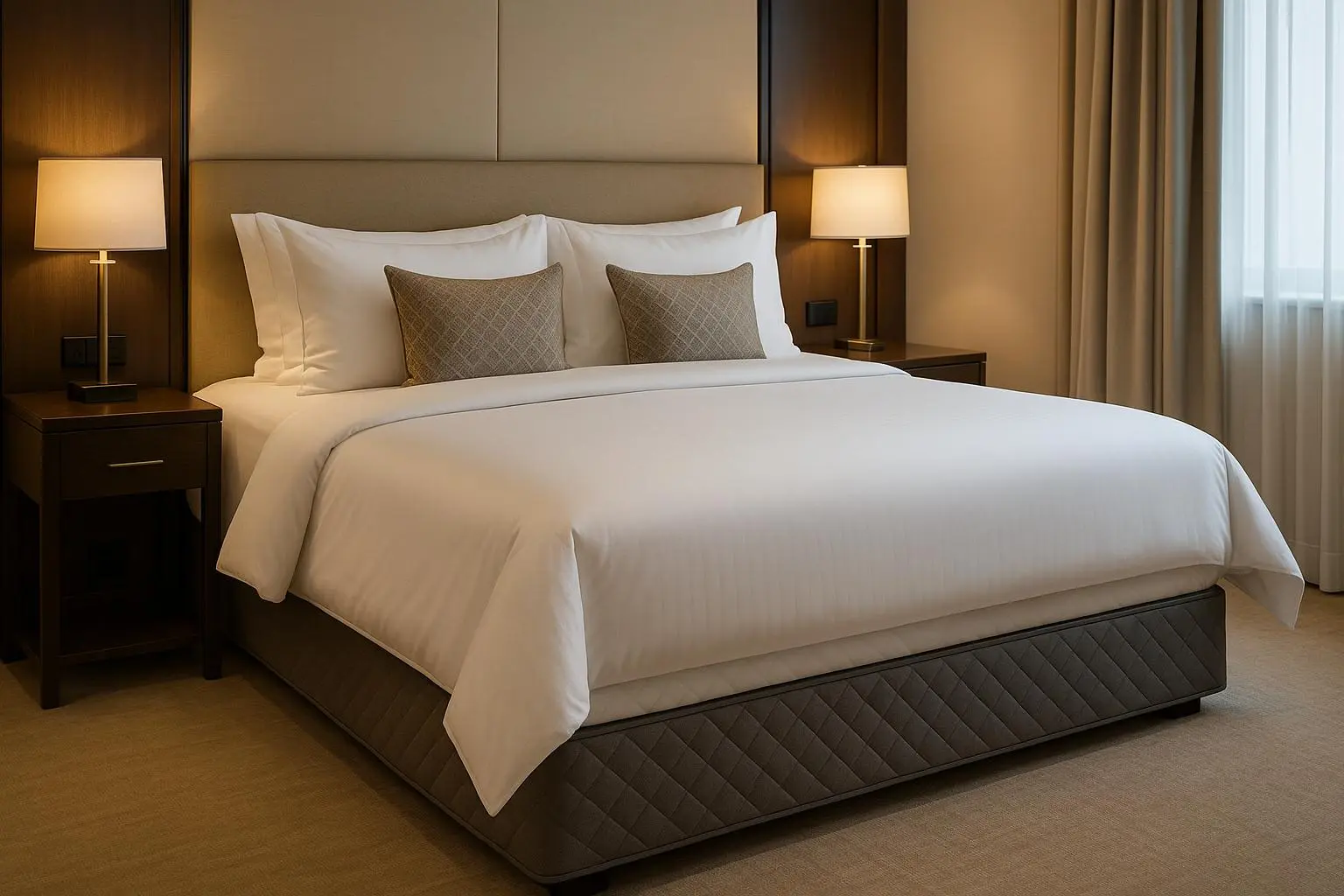
How Mattress Quality and Bedding Choices Affect the Quality of Your Sleep
In the hospitality sector, sleep quality is a business-critical factor that directly impacts guest satisfaction, online reviews, and repeat bookings. The combination of high-quality mattresses and premium bedding is not just a matter of comfort—it is a strategic investment that shapes brand reputation and long-term profitability.
(more…) -
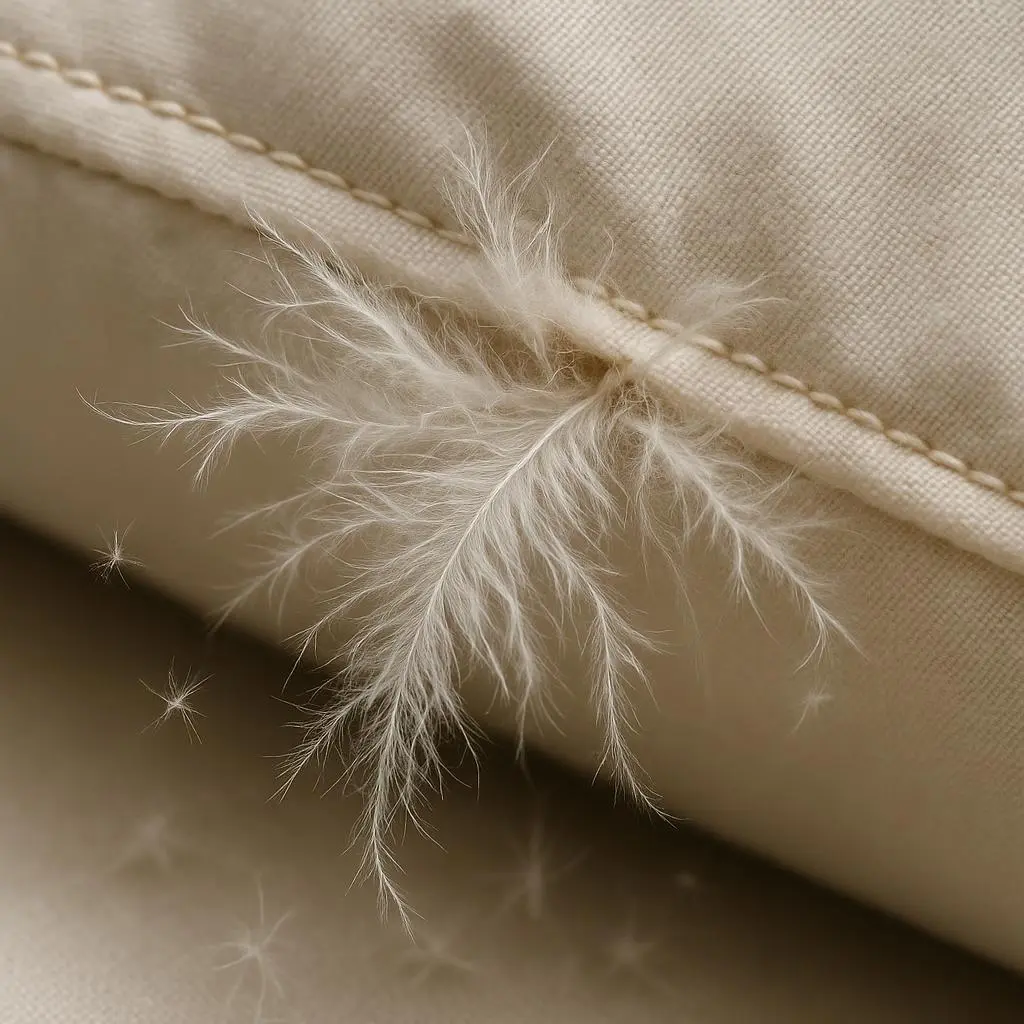
How Can I Stop the Feathers Escaping from My Duvet and Pillows?
Feather leakage is a common quality concern in down and feather-filled bedding. Whether you’re a hospitality operator aiming to uphold premium guest experiences or a brand sourcing private-label duvet sets, persistent feather escape can lead to customer complaints, product returns, and reputational damage.
This article explores why feathers leak, what technical solutions are available, and how to prevent this issue in product development and sourcing.
(more…)

